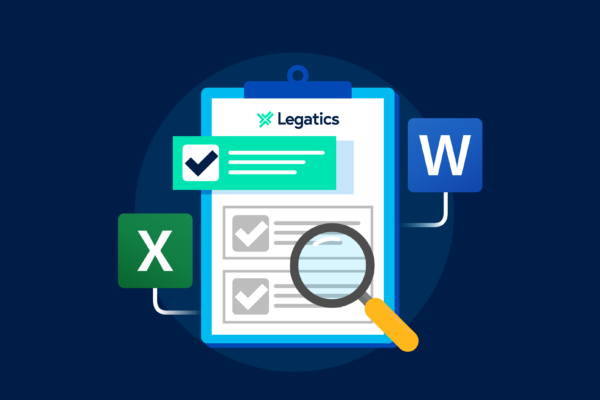We explore four ways in which Legatics can help lawyers streamline insolvencies
With corporate insolvencies in December 2022 32% higher than December 2021 and 76% higher than in December 2019 (Financial Times), the outlook for insolvency lawyers is busy. Insolvency transactions can be complex and long-running, requiring a high level of attention to detail and meticulous management of a large number of documents. In this article, we discuss four ways Legatics helps lawyers manage insolvency transactions.
Insolvency challenges for lawyers
Due to their complexity, insolvency transactions come with many common challenges for lawyers. Here are four frequent problems lawyers face in this area and how Legatics can help:
Problem 1) Creating and managing lists
Insolvency transactions typically last 6-12 months, with complex transactions going on for years. As such, these transactions involve a variety of legal and financial tasks that need to be managed and completed in a timely and well-controlled fashion.
Solution:
Legatics helps lawyers create lists quickly and easily. The legal text import tool, together with the ability to import from Word and Excel and the platform’s 40+ templates, make building your ideal digital list simple and stress-free!
The start from another list feature allows you to quickly copy a list from the same or a previous matter, so you can reuse it whenever you like. Additionally, lists are customizable – with flexible columns that you can add, remove, rename, resize, and reorder as needed.
Problem 2) Document management
Insolvency transactions come with a huge volume of documents. In many law firms, legal documents exist in a variety of formats and locations, such as emails, print, and document management systems. This often makes it difficult to track down the latest version, obstructing (or delaying) vital collaboration.
Solution:
With Legatics, all of your documents are held together, in one convenient place. This gives you total visibility, including a full document history complete with version numbers and relevant data (like its status or comments about it).
Problem 3) Signing documents
Timely signing of documents is vital in insolvency transactions to keep things moving and avoid delays. In many law firms, the signing process is disjointed and lacks visibility, which can cause confusion and impact progress.
Solution:
In Legatics, every list has a signing view, allowing you to see all of your signing documents at a glance. You can also set up parties and signatories in advance of signing, send them for electronic signature, track signing progress by party and signatory, and locate completion certificates with ease. This saves you the time and effort of creating and updating a signing checklist. It also grants you complete visibility over the signing status, which is essential in an insolvency process.
Problem 4) Collaborating with multiple parties
Insolvency transactions depend on many parties to run smoothly. As a result, relying on email and phone calls to progress things isn’t the most efficient way to manage these transactions.
Solution:
With Legatics, you don’t have to switch between documents, spreadsheets, emails, and other tools to keep your transaction running smoothly. Everything you need to collaboratively plan, organize, and execute your transaction is hosted in one convenient place.
The convenience of using a central platform, that’s accessible by all parties, cuts out a significant amount of admin in keeping up with email chains and sending reminders for parties to complete assigned tasks. It also offers at-a-glance real-time visibility of a transaction’s status.
Simplify your insolvency transactions with Legatics
Legatics has a range of features to help law firms manage insolvency transactions. For complex insolvency processes, using Legatics can significantly increase the transaction’s visibility, keep things moving, and reduce the associated admin. If you want to learn more about how Legatics can help you manage insolvency transactions, book a product demo today!









